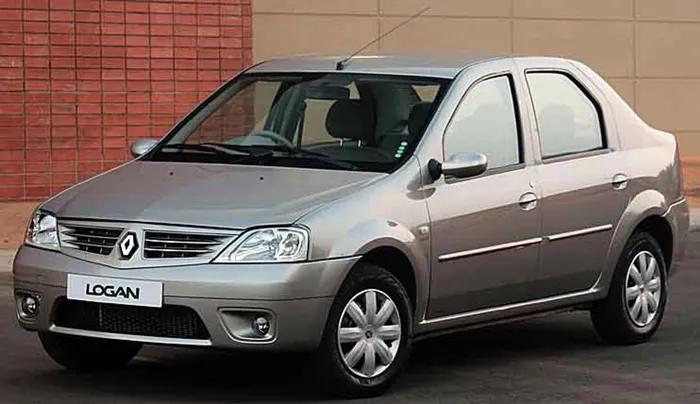Enough sugar in the Logan ice-cream cake

It is a Renault that looks like its Nissan cousins, is built in India - and is surprisingly affordable.
In days when a 1300cc Toyota Corolla will set you back some R170 000 you can buy a 1600cc Renault Logan, with aircon, power steering, radio/CD/MP3 and power windows, as well as all the safety additions like such as crashbags and anti-lock brakes, for R112 000.
Don't expect much refinement in the interior - and don't be surprised if the car reminds you of the Japanese entry-level model you drove in the early 1990's but the car's road behaviour is a surprise, with a firm but comfortable ride, good handling and good fuel consumption.
As such, it's obvious why Renault was prepared to lend its name to the car.
When a Renault Logan, resplendent in a slightly glaring vanilla-white, arrived at the doorstep of the Du Plessis abode, some trepidation was felt in certain quarters.
For starters, the car soon picked up the ignoble tag of the Ice-Cream Cake. Now, I have to agree that there are many cars out there with this, er, sort of colour, but I don't think anybody has ever been able to make it look as bright as this.
The car may look small in a photograph but in real life there's a lot of sheet metal on it and, therefore, lots of white paint.
And when you start it up, it even sounds like an early 1990's Japanese entry-level model. Then it struck me soon after taking charge of the Renault Logan: this is potentially a brilliant pool car.
Toyota's basic 1600cc Corolla has been the pool car of choice for years, followed closely by models such as the Nissan Sentra, Volkswagen CitiGolf and so on.
The Sentra has been replaced by more expensive models, the Toyota has turned into a more expensive unit and only the CitiGolf remains an entry-level machine with pool-car potential. But the Citi is a bit long in the tooth and, often, companies prefer to have something with a boot rather than a hatch.
With a fuel consumption of under nine litres/100km and an engine that doesn't offer more than just enough power for reasonable driving comfort, the Logan should be comfortable enough for the company representative who needs to be on the road a lot, while being economical enough to make the company's garage manager reasonably happy.
But then, on the other hand, the Logan also comes across as a no-nonsense, low-cost family car. It has a large boot, is spacious in the rear and its somewhat plastic interior is perfect for easy cleaning.
NO-FRILLS CAR
I also suspect many a pensioner might see this as a good solution for low-cost motoring. It offers relative peace of mind with the Renault badge on the nose, which is supposed to tell you it is a quality product that won't leave you stranded in uncomfortable places.
It is a no-frills car - if you forget about the front power windows. These days, aircon is accepted as a necessity rather than a frill, especially in summer.
I believe it actually contributes to road safety, by combating driver fatigue.
And seeing as we are talking about a front-wheel drive vehicle, power-assisted steering has obvious benefits too, especially in urban traffic.
The car's interior has expanses of plastic. I disliked the absence of real interior door pulls. Instead, the Logan offers tenuous indentations in the armrests which you grip to close the door.
DUCKING AND DIVING
The Logan's roof is quite high, allowing for lots of headroom. But herein lies a problem - the car will allow itself to be driven by vertically advantaged individuals, but with the steering wheel built in place with no height adjustment, taller people are not going to be able to see the computer screen in the top centre of the instrument binnacle.
I, as a not-so vertically challenged individual, found myself ducking my head to see the top part of it under the steering wheel's rim.
An advantage of the high roof is that there is plenty of glass all around, making all-round vision quite good. The car's vertical volume reminds of the Nissan Tiida's design, hence my feeling that the Logan could be passed off as this perpetually under-rated Japanese brand.
The car is powered by an eight-valve, four-cylinder 1.6-litre engine that's has been around for a while in the Renault stable. When Renault says the engine is "based on technology that has been proven through years of continued operation in various Renault vehicles", it means it is old technology.
Not that there's anything wrong with old technology when it has a track record as good as this one.
The unit delivers maximum power of 64kW at 5500rpm and 128Nm of torque at 3100rpm. Certainly not a rocket - it takes the Logan 11.5sec to get to 100km/h on its way to a top speed of 175km/h -but with a car such as this, that's what you want.
No rock 'n roll, just plain old functional efficiency.